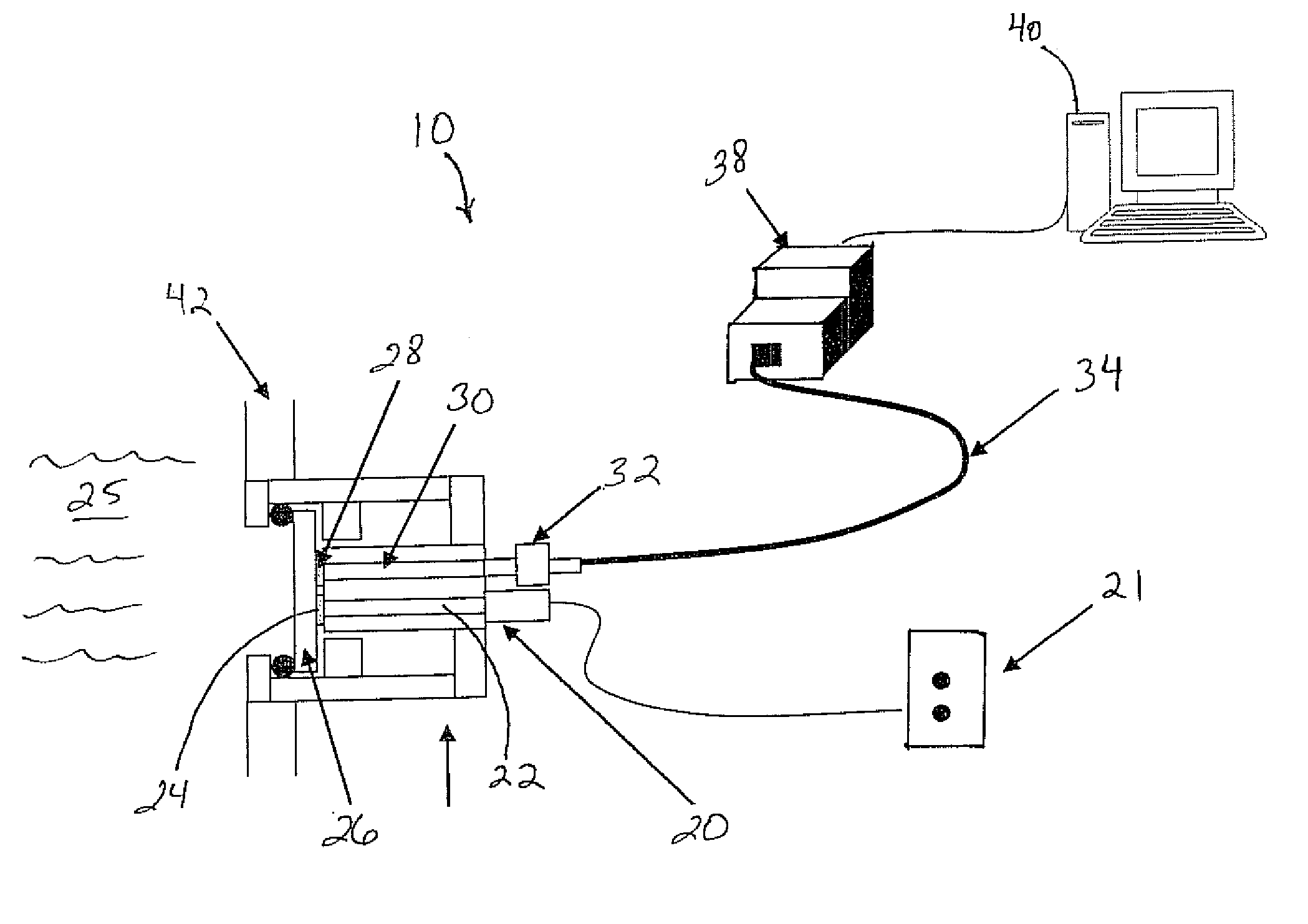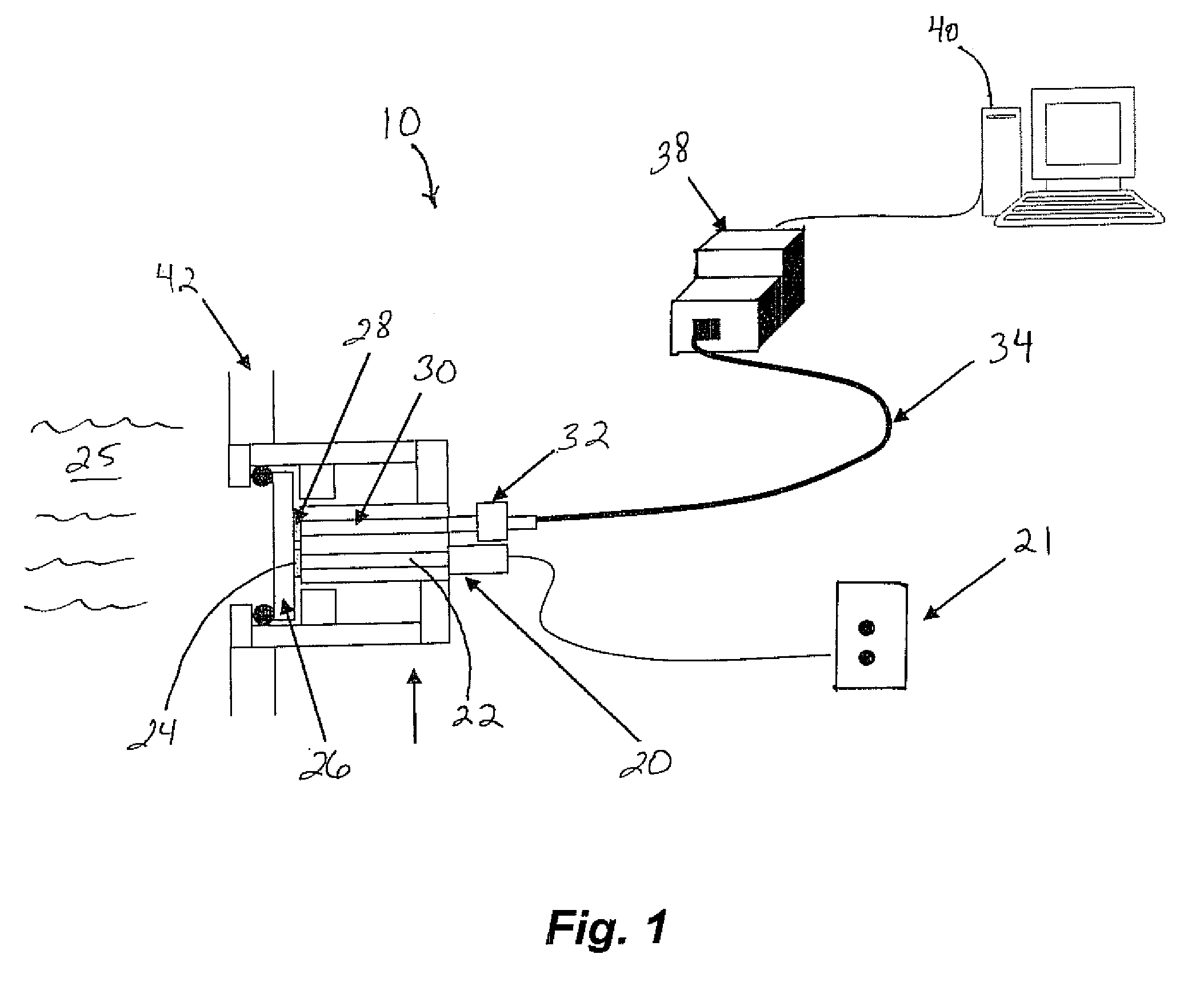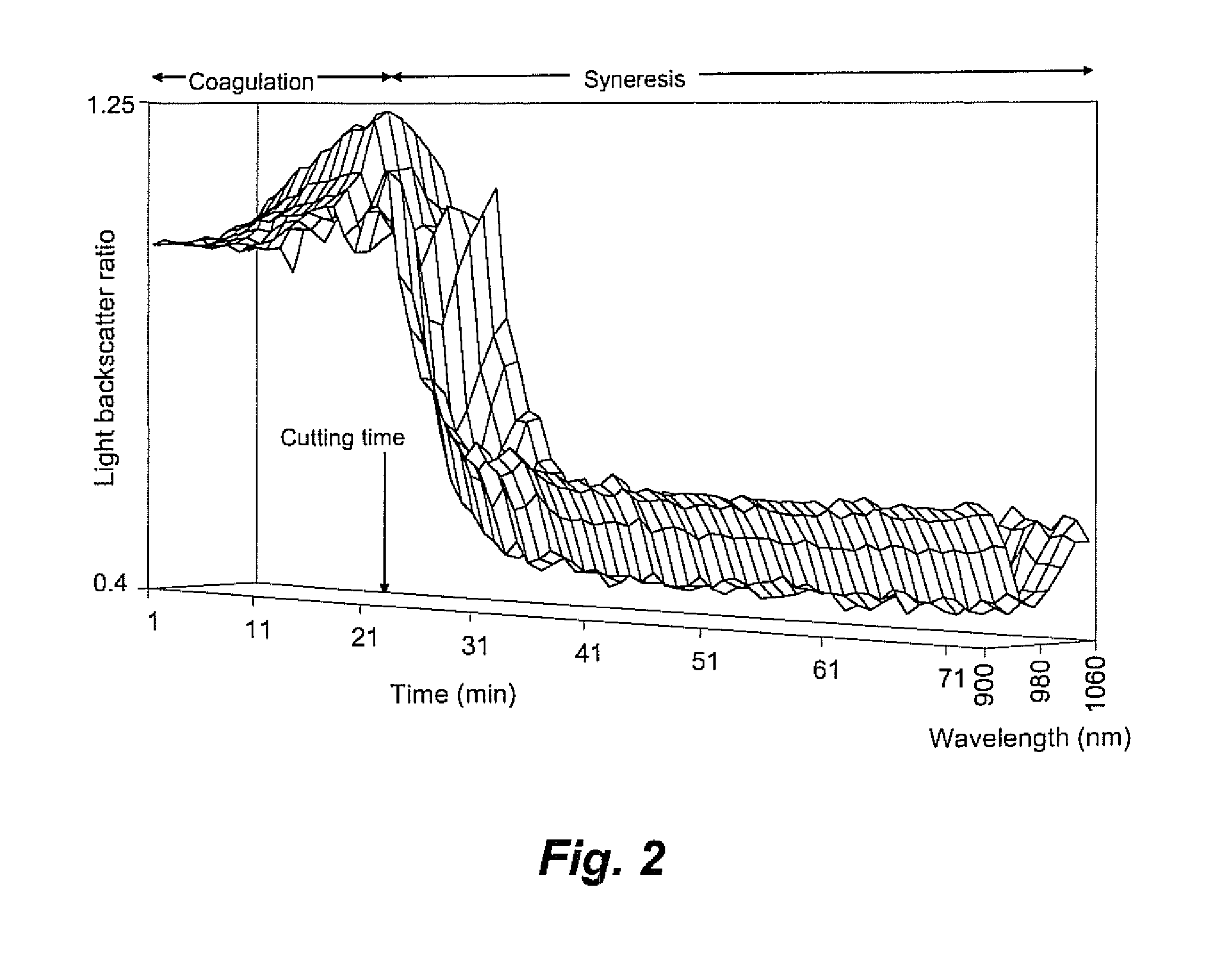Online, continuous sensor and method for curd moisture content control in cheese making
- Summary
- Abstract
- Description
- Claims
- Application Information
AI Technical Summary
Benefits of technology
Problems solved by technology
Method used
Image
Examples
example 1
[0021]As shown schematically in FIG. 1, a large field of view (LFV) sensor 10 was provided having a light source 20 (in the depicted embodiment, a tungsten halogen light source having a spectral range of 360-2000 nm). The light source 20 is powered by a power supply 21.
[0022]Light from the light source 20 was directed through a light guide 22, in the depicted embodiment an optical fiber, and optionally through a vertical polarizing plate 24, and a large-diameter glass window 26 to impinge on a milk sample 25. The large-diameter glass window 26 allowed scattered light to be collected from a large area. An optional second polarizing plate 28 allowed selective detection of horizontally polarized light. Collected backscattered light was transmitted through a light collector 30 (in the depicted embodiment, a second optical fiber), a SMA connector 32, and a fiber optic cable 34 (˜800 μm diameter fiber optic cable; Spectran Specialty Optics, Avon, Conn., USA) to the master unit of a dual m...
example 2
[0027]Milk coagulation tests were conducted over a broad range of conditions typically used in the cheese making industry. A three-factor, filly randomized, spherical, central composite design (CCD) was employed to evaluate the response of the proposed syneresis sensor prototype over a wide range of coagulation and syneresis rates. The CCD consisted of a 2k factorial (k=3) with 2k axial points and six center points (i.e., 20 runs in total) and was carried out in triplicate. The three factors selected as independent variables were coagulation temperature (T), calcium chloride (CaCl2) addition level (CCAL) and cutting time (tcut). The experimental factors, their selected levels and coded values are presented in Table 1.
TABLE 1The experimental factors and levels employed in the centralcomposite rotatable experimental designFactorsTemperatureAdded CaCl2Cutting time (β)(Coded value)(° C.)(mM)(dimensionless)a−1.68223.60.3181.32−127.01.001.80032.02.002.50137.03.003.201.68240.43.683.68aExpe...
PUM
 Login to View More
Login to View More Abstract
Description
Claims
Application Information
 Login to View More
Login to View More - R&D
- Intellectual Property
- Life Sciences
- Materials
- Tech Scout
- Unparalleled Data Quality
- Higher Quality Content
- 60% Fewer Hallucinations
Browse by: Latest US Patents, China's latest patents, Technical Efficacy Thesaurus, Application Domain, Technology Topic, Popular Technical Reports.
© 2025 PatSnap. All rights reserved.Legal|Privacy policy|Modern Slavery Act Transparency Statement|Sitemap|About US| Contact US: help@patsnap.com



